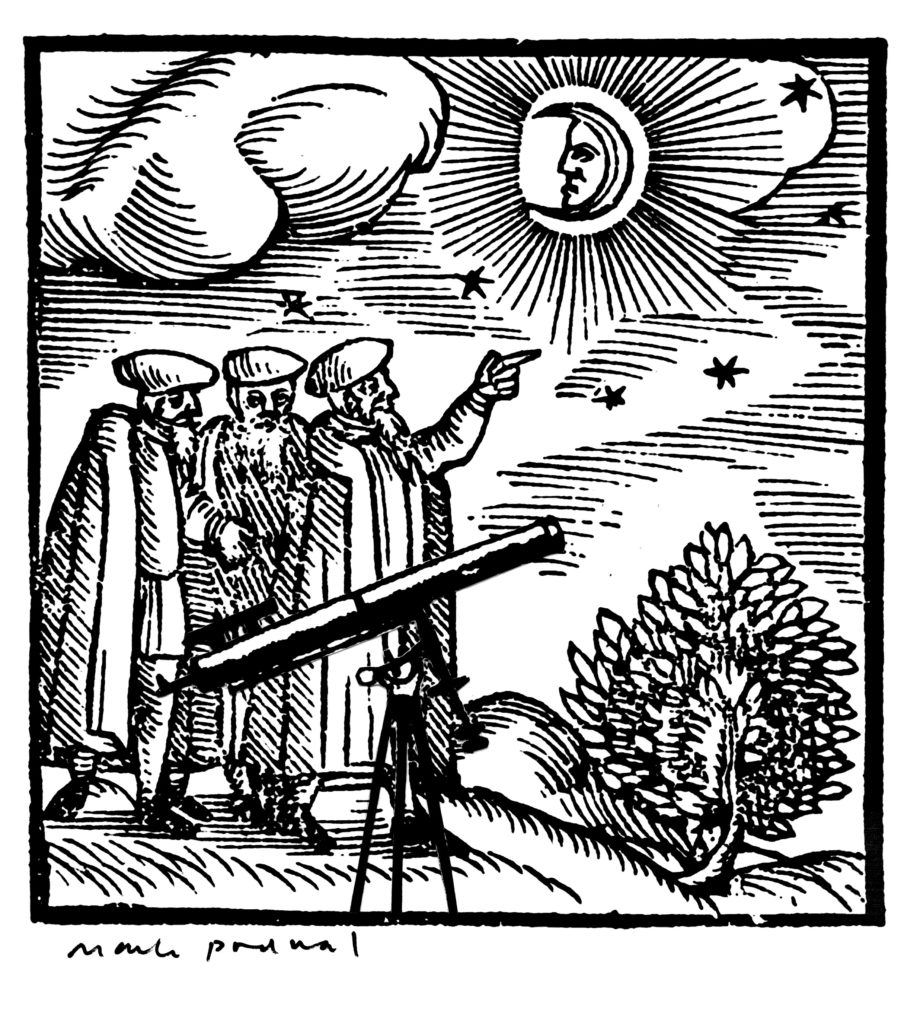Blessing the New Moon
Mark Podwal (b. 1945)
Digitial archival pigment print on paper
7 7/16 x 7 9/16″
USA, 2020
© Mark Podwal
Rosh Hodesh (head of the month) is a minor holiday that marks the beginning of every Hebrew month. The Torah instructs that on Rosh Hodesh the people are commanded to be joyous, offer sacrifices, and recall God’s divinity (Numbers 10:10). In antiquity there was no set calendar, and the rabbinic court would declare a new month after receiving the testimony of two reliable witnesses that they had seen the new moon. Rosh Hodesh celebrations begin the Shabbat before the new moon with a special prayer at the conclusion of the Torah reading that expresses the hopes for the coming month. Rosh Hodesh has long been considered a special holiday for women, who are encouraged to abstain from work as a reward for not offering their jewelry for the fashioning of the Golden Calf (Exodus 32:2). According to Rabbi Akiva, God, with His divine finger, showed Moses the correct stage of the new moon to bless. Kiddush levana (sanctification of the moon) is a ritual performed when the moon is visible and not to- tally covered by clouds, in which prayers are recited to bless the new moon and thank God for its reappearance. Those assembled at Kiddush levana greet each other saying three times, “Peace be to you.” Some believe that one who recites the blessing of the new moon will not die that month. Since the prayers are said facing the moon, it may erroneously appear that the moon is being worshipped. Singing the prayer Aleinu, which states “It is our duty to praise [God],” at the service’s conclusion affirms that God is worshipped and not the moon.

